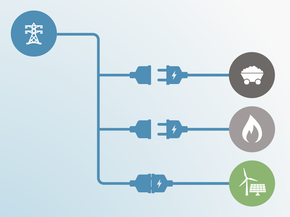Country summary
Overview
Canada’s current policies would be rated “Highly insufficient” and whilst full implementation of its planned policies under the Pan-Canadian Framework, Canada’s climate policies would result in some improvement, they would still be “Insufficient” Recent analysis by Energy Innovation (EI) and the Pembina Institute further suggests that the gap between planned policies and its “Insufficient” NDC target (without relying on LULUCF sinks) might be larger than expected by the government. Canada must significantly enhance both its NDC and its proposed level of climate action to get onto an emissions pathway compatible with the Paris Agreement. The recent repeal of the cap-and-trade system in Ontario, which is responsible for almost a quarter of Canada’s GHG emissions, and the subsequent cancellation of the province’s Electric and Hydrogen Vehicle Incentive Program are, however, steps in the wrong direction, as is the decision by the federal government to move ahead with the Trans Mountain pipeline to transport oil from Alberta’s oil sands to export ports (See Current Policy Projections section for full analysis).
The planned Canadian federal carbon pricing mechanism is rolled out, but faces serious opposition from several provinces, potentially making its implementation difficult: In mid-2018, Ontario’s Premier Douglas Ford repealed the province’s cap-and-trade programme and Manitoba’s Premier has indicated he will do the same. As a result of this backlash and proposals that fall short of the national requirements, the Canadian federal government announced in October 2018 that it will impose the federal carbon pricing backstopping plan on five of the country’s 13 provinces and territories in 2019: Ontario, Manitoba, Saskatchewan, New Brunswick, and Prince Edward Island. Ontario, Manitoba and Saskatchewan plan to mount legal challenges contesting the imposition of the scheme on their provinces.
The mandatory federal carbon pricing system is one of the measures outlined in Canada’s Pan-Canadian Framework on Clean Growth and Climate Change, announced in 2016, which serves as an overarching strategy document for emission reductions. Canada progressed on implementation of the framework in 2018, publishing federal methane regulations and increasing the stringency of fuel standards for freight vehicles. However, based on the implemented policies under this framework, Canada is likely to miss its Paris Agreement (NDC) target to reduce economy-wide GHG emissions by 30% below 2005 levels by 2030. It remains unclear whether Canada will rely on carbon sinks in forests, soils, and wetlands to achieve its target. If it does so, and experiences low economic growth, it might achieve its NDC target with current policies. Given the lack of clarity around the potential reliance on carbon sinks, the CAT rates this target “Highly insufficient”.
On 11 May 2017, Canada submitted its revised NDC. While the revision does not change Canada’s NDC target, it potentially weakened the target by stating that Canada is examining its approach to accounting for emissions in the land use, land use change and forestry (LULUCF) sector. This is a departure from its original NDC submission, which stated that Canada would use a net-net1 accounting approach for the LULUCF sector. However, as it is not clear to which degree Canada will rely on carbon sinks in the LULUCF sector to achieve its target of a 30% reduction below 2005 levels, we show the target as a range of 513–655 MtCO2e. For the lower bound of this range, which reflects the NDC target as reported in the 7th National Communication (NC7), we assume that the target excludes LULUCF in 2030, which is equivalent to a 15% reduction below 1990 levels of GHG emissions excluding LULUCF. For the upper bound, we assume that Canada will fully rely on the projected LULUCF sink of 142 MtCO2e in 2030.
Based on the policies implemented as of September 2017, we estimate that Canada’s GHG emissions (excluding LULUCF) will increase to 15–19% above 1990 levels by 2020. By 2030, emissions are projected to increase by 6–28% above 1990 levels excl. LULUCF.
With planned policies, emissions are expected to reach 568 MtCO2e excl. LULUCF in 2030, which would bring Canada closer to achieving its NDC target, even if it would not rely on emissions reductions from the LULUCF sector. The emissions level in 2030 from planned policies is equivalent to a 6% reduction from 1990 levels, excl. LULUCF and a 22% reduction from 2005 levels, excl. LULUCF. There is no clarity as to how many international credits Canada plans to use to meet its NDC target. The use of international carbon credits implies that a portion of Canada’s emissions reductions will not be met by domestic mitigation efforts.
1 | Net/net accounting approach takes the difference between the total net GHG flow from LULUCF in the target year and in the base year which is accounted for in the country’s GHG balance. https://ec.europa.eu/clima/sites/clima/files/docs/0013/info_sheet_lulucf_final_en.pdf
Further analysis
Latest publications
Stay informed
Subscribe to our newsletter






